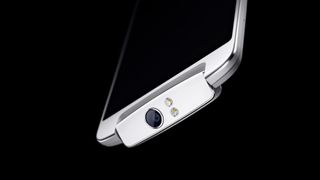How China is orchestrating a semiconductor revolution
It's music to ARM's ears

If you aren't familiar with any China-based semiconductor companies, the chances are you will be soon.
According to British chip designer ARM, the region is innovating at a faster pace than ever before to meet the needs of its 1.3 billion-strong consumer base, and the West is beginning to sit up and take notice.
IC Insight's McClean report, which ranks the top 50 global semiconductor suppliers by sales, saw Taiwan-based MediaTek jump from 22nd to 16th in 2013 after almost doubling sales.
The company has a busy schedule: it may be supplying low-cost processors for Amazon's Kindle Fire HD X 2, Google's next Nexus phone and a slew of incoming mid-range Android devices from Lenovo.
TechRadar Pro spoke to Noel Hurley, Deputy General Manager of ARM's CPU Group, to find out more about the Greater China region's fast-evolving semiconductor revolution.
TechRadar Pro: MediaTek, UMC and other China-based semiconductor companies seem to be gaining traction these days. What is the region doing differently?
Noel Hurley: We jokingly talk about "China Time", meaning there's a demand for responsiveness across Asia where people are looking not only to innovate, but innovate quickly.
Are you a pro? Subscribe to our newsletter
Sign up to the TechRadar Pro newsletter to get all the top news, opinion, features and guidance your business needs to succeed!
They have to spin [out] chips quickly to be able to respond super fast to changes in trends within the marketplace. Where maybe a Western customer would expect an answer in a day or two, an Asian person would expect it in an hour or two.
You have to be very responsive to the region's companies, which expect - both externally and internally - very fast turnaround times and innovation.
TRP: Is that because the region's consumers are demanding faster innovation and new devices more than those in the West?
NH: The classic impression of China copying the West is rapidly changing. That whole region that includes China, Taiwan, Korea and other countries are innovating for a local market, rather than trying to copy Western products.
Maybe five or seven years ago you would see copies of Western products, whereas now we're seeing their own innovation more suited to the culture in the East.

TRP: We're starting to see innovation from China-based smartphone manufacturers - like the swivelling "selfie" camera on the Oppo N1…
NH: Exactly. We're also starting to see triple-SIM smartphones in Asia, which is where you have a middle-class, regularly-traveling section of the population on different call plans depending on where they are.
Instead of taking the back off a phone to exchange the SIM, people want three SIM slots down the side of it so they can insert their Hong Kong, mainland China or Taiwan cards in. That local economy setup presents opportunities, and we're starting to see move innovations around them.

